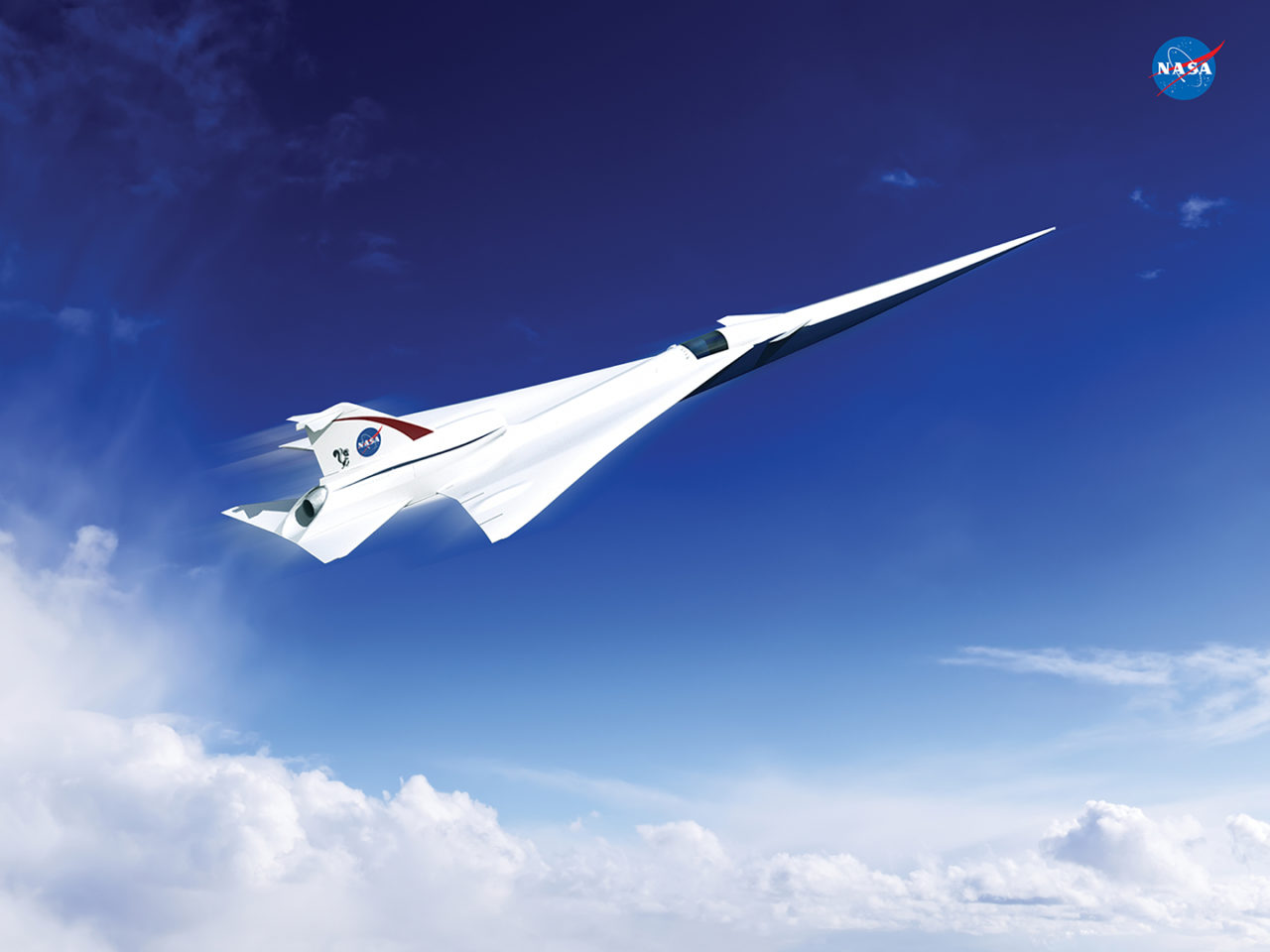 |
| An artist’s concept of a possible Low Boom Flight Demonstration Quiet Supersonic Transport (QueSST) X-plane design. Photo: Lockheed Martin |
[Avionics Today 03-02-2016] NASA has awarded the Lockheed Martin Aeronautics Company a contract for the preliminary design of a supersonic, “low boom” flight demonstration aircraft. This is the first in a series of “X-planes” in NASA’s New Aviation Horizons initiative, introduced in the agency’s fiscal year 2017 budget.
“It’s worth noting that it’s been almost 70 years since Chuck Yeager broke the sound barrier in the Bell X-1 as part of our predecessor agency’s high speed research. Now we are continuing that supersonic X-plane legacy with this preliminary design award for a quieter supersonic jet with an aim toward passenger flight,” NASA Administrator Charles Bolden said at an event to announce the award at a Feb. 29 press conference at Ronald Reagan Washington National Airport.
Lockheed Martin will receive about $20 million over 17 months to complete a preliminary design for Quiet Supersonic Technology (QueSST). The company will complete the work under a task order against the Basic and Applied Aerospace Research and Technology (BAART) contract at NASA’s Langley Research Center in Hampton, Va. The Lockheed Martin team includes subcontractors GE Aviation of Cincinnati and Tri Models Inc. of Huntington Beach, Calif.
After conducting feasibility studies and working to better understand acceptable sound levels across the country, NASA’s Commercial Supersonic Technology Project asked industry teams to submit design concepts for a piloted test aircraft that can fly at supersonic speeds, creating a supersonic “heartbeat” — a soft thump rather than the disruptive boom currently associated with supersonic flight.
Going forward, Lockheed Martin will develop baseline aircraft requirements and a preliminary aircraft design, with specifications, and provide supporting documentation for concept formulation and planning. This documentation would be used to prepare for the detailed design, building and testing of the QueSST jet. Performance of this preliminary design also must undergo analytical and wind tunnel validation.
In addition to design and building, this Low Boom Flight Demonstration (LBFD) phase of the project also will include validation of community response to the new, quieter supersonic design. Design-and-build will take several years with aircraft starting their flight campaign around 2020, depending on funding.